Patrick Heron

Heron’s work as an artist began by designing silk scarves for his father’s company when he was only 14. He was influenced by other artists such as Henri Matisse and Paul Cézanne.
Patrick’s paintings are full of imagination and fascinating shapes. He loved the town St Ives in Cornwall and a lot of his work is inspired by scenes and images from there. For example, the painting Harbour Window with Two Figures: St Ives: July 1950 shows a view of the harbour from his window. Patrick said he was interested in showing the indoors and outdoors in his art.

A lot of Patrick’s work is known as abstract art. Abstract paintings tend not to look exactly like what we see in real life. A lot of his paintings explore images and scenes from his everyday life, like the beach, the sky, or the garden in his house.

Employing the term “non-figurative” to describe his exploration of vibrant colour, he believed that all art could be considered abstract.
His work is in a number of important collections, including The Metropolitan Museum of Art in New York, the Carnegie Institute in Pittsburgh, The National Portrait Gallery in London, and many others.
In my personal opinion, his work is probably very good, but I’ve never been a big fan of abstract art, it’s just not my thing. But I can kind of get what he’s trying to do, like in the Red Garden painting above, it is like he jotted down all the colours he saw and tried to express all the emotion that he felt whilst looking out at what I presume was a red garden. That’s actually pretty cool.
Francis Bacon

Artist Francis Bacon is best known for his post-World War II paintings, in which he represented the human face and figure in an expressive, often grotesque style.

Most of his paintings from the 1940s to ’60s depict the human figure in scenes that suggest alienation, violence and suffering. Bacon’s provocative, expressive work is considered some of the most important art of the postwar era.
He wondered into a Picasso exhibition that had just opened near his house, and after seeing his paintings, decided that they weren’t so good Afterall, and so he went home and tried his hand at painting.
His emotional use of brushwork and colour, as well as his exaggeration of forms, caused him to be labelled as an Expressionist artist, though he rejected the term.
Bacon used brighter colours at times, but themes of violence and mortality were still central to his art. He also frequently painted portraits of people he knew, including fellow artist Lucian Freud and George Dyer, who met Bacon upon attempting to rob the painter’s home.

In my personal opinion, I’ve loved Bacon’s work for a while now. In all honesty, as with most of the art in this blog, I don’t understand the meaning behind most of it, but I love looking at it, it is a very visceral and raw experience. My favourite painting of his is the screaming pope one. He doesn’t shy away from portraying uncomfortable images and ideas. I’m also very intrigued by his life and personality, he had very violent relationships with men, to the point where he was even thrown out of his 2nd story window by his boyfriend. He was a very messed up, but interesting person.
Peter Blake
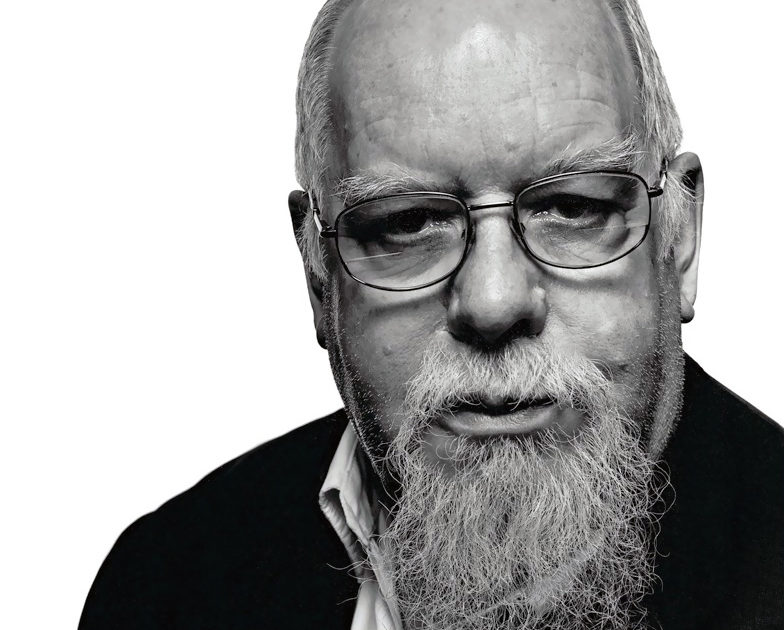
Peter Blake is an English pop artist, best known for co-creating the sleeve design for the Beatles’ album Sgt. Pepper’s Lonely Hearts Club Band. His other best-known works include the cover of the Band-Aid single “Do They Know It’s Christmas?”, and the Live Aid concert poster.

Peter Blake studied at Gravesend School of Art before being accepted into the Royal College of Art, London, where he studied alongside other key British Pop artists, David Hockney, R.B. Kitaj, Joe Tilson, Allen Jones, Peter Phillips and Derek Boshier.
His 1961 ‘Self-portrait With Badges’, where he stands in his denim jeans and jacket, wearing Converse trainers and holding an Elvis album, is one of the iconic images of the time.
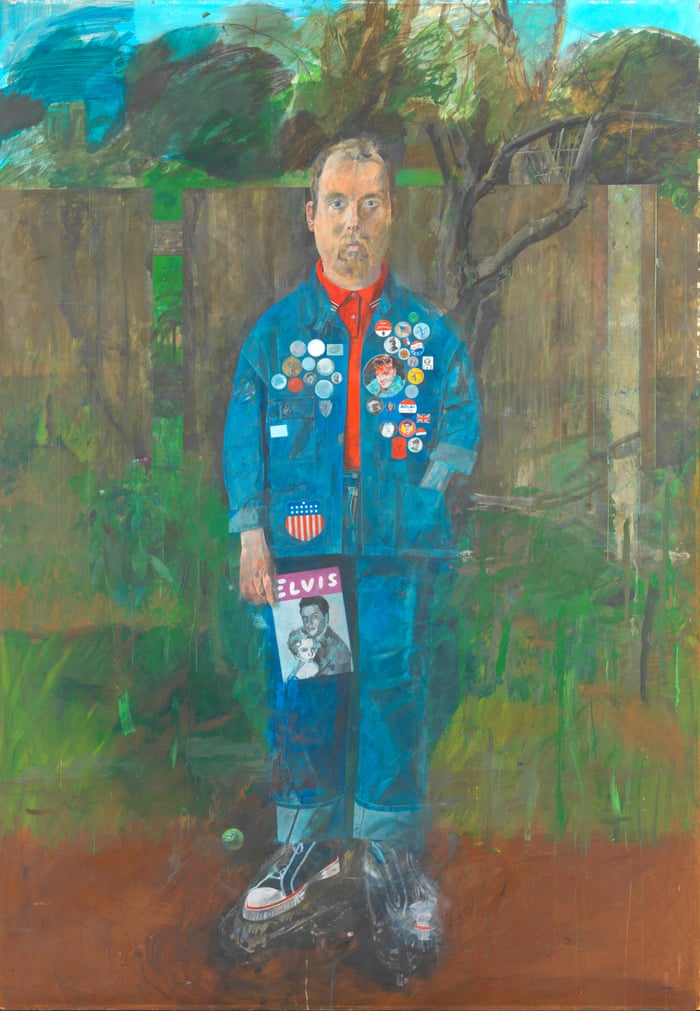
In the 1950s he was one of a group of young artists who started to paint pictures and make sculptures about popular culture (or pop culture). They painted things they liked such as films, comic books, and pop music.
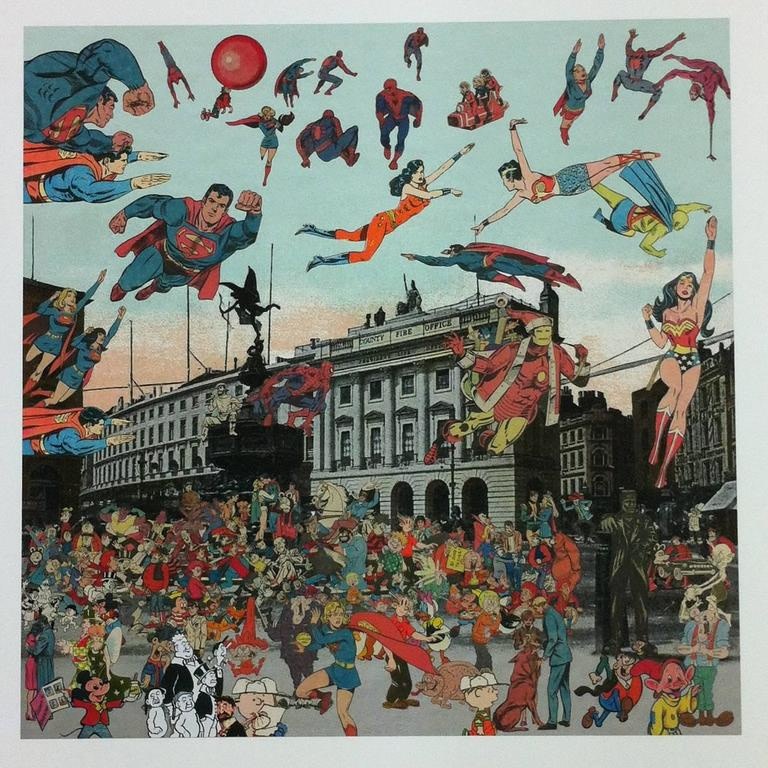
He was elected a member of the Royal Academy in 1981 and was knighted in 2002.
In my personal opinion, I like his work, it is interesting that he seems to cram as much information as humanly possible into a single image, whether it be dozens of people and iconic figures, or a jacket full of all of his inspirations and interests. There is always a lot to look at in his art.
Richard Hamilton

Richard Hamilton was an English artist known for producing some of the earliest works of Pop Art.
Born on February 24, 1922, in London, United Kingdom, Hamilton was working as an apprentice at an electrical components firm when he began taking evening art classes at Saint Martin’s School of Art. Entering the Royal Academy at the age of 16, Hamilton was later expelled for not following the school’s regulations.
In 1956, he completed his first major collage work, Just what is it that makes today’s homes so different, so appealing? a seminal image in Pop Art history.

Accepting an offer to teach at his old alma mater, Hamilton mentored a number of students during the late 1950s, including Peter Blake and David Hockney.
Hamilton was introduced to Paul McCartney and subsequently produced the cover art for The Beatles’ White Album (1968).

In my personal opinion, I don’t really understand his work, but it seems interesting.
Gilbert and George

They are two artists who work together as the collaborative art duo Gilbert & George. They are known for their distinctive and highly formal appearance and the manner in performance art, and also for their brightly coloured graphic-style photo-based artworks.
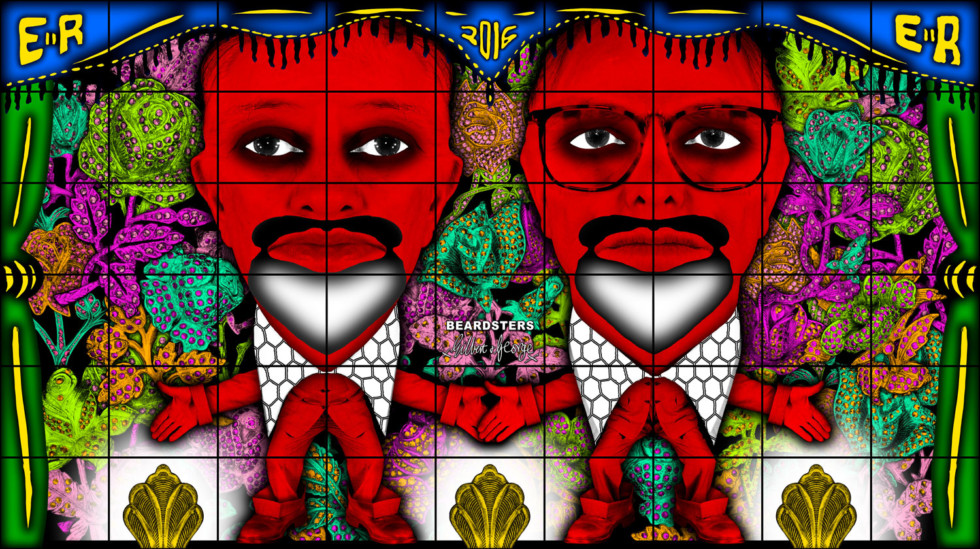
The two claim they came together because George was the only person who could understand Gilbert’s rather poor English. In a 2002 interview with the Daily Telegraph, they said of their meeting: “it was love at first sight”. They married in 2008.
Gilbert and George’s approach to art has always been anti-elitist. Adopting the slogan ‘Art for All’, they aimed to be relevant beyond the narrow confines of the art world.

The pair are perhaps best known for their large scale photo works, known as The Pictures.

The early work in this style is in black and white, later with hand-painted red and yellow touches. They proceeded to use a range of bolder colours, sometimes backlit and overlaid with black grids. Their work has addressed a wide variety of subject matter including religion and patriotism. The two artists also often appear in their own “pictures” They have described their “pictures” as a sort of “visual love letter from us to the viewer”.
In my personal opinion, Once again I don’t really understand their work, but I really like it, it is very vibrant and is very full of life. The designs are very otherworldly and hallucinogenic. I love the use of colour. I also like their signature suits, and the fact that they’re married and are hardly never seen outside apart from each other is very cute and heartwarming, which makes me feel a great deal more warmth towards their work.
Tracy Emin

Tracey Emin’s art is one of disclosure, using her life events as inspiration for works ranging from painting, drawing, video and installation, to photography, needlework and sculpture. Emin reveals her hopes, humiliations, failures and successes in candid and, at times, excoriating work that is frequently both tragic and humorous. She was a part of the YBA (Young British Artists) movement.
In 1999, Emin had her first solo exhibition in the United States at Lehmann Maupin Gallery, entitled Every Part of Me’s Bleeding.
.jpg)
She was a Turner Prize nominee and exhibited My Bed – a readymade installation, consisting of her own unmade dirty bed, in which she had spent several weeks drinking, smoking, eating, sleeping and having sexual intercourse while undergoing a period of severe depression. The artwork featured used condoms and blood-stained underwear.

In Everyone I’ve Ever Slept With, Emin used the process of appliqué to inscribe the names of lovers, friends and family within a small tent, into which the viewer had to crawl inside, becoming both voyeur and confidante.

Her interest in the work of Edvard Munch and Egon Schiele particularly inform Emin’s paintings, monoprints and drawings, which explore complex personal states and ideas of self-representation through manifestly expressionist styles and themes.

In my personal opinion I love Tracy Emin’s work, it is very personal and she doesn’t hide any part of herself away from her art. I love how in 1998 she was talking about depression and mental health in her installation My Bed. I also find it hilarious that she just picked up her grimy bed and plonked it down in the middle of a gallery and that is rightfully considered great art, it just shows that literally, anything can be art. By doing this she was putting the entirety of herself at that point up for public display, which is a very brave and bold move. The bed was said to emit a terrible smell, which is the cherry on the artistic cake.
Grayson Perry

Grayson Perry an English contemporary artist. He is known for his ceramic vases, tapestries and cross-dressing, as well as his observations of the contemporary arts scene, and for dissecting British “prejudices, fashions and foibles”
Perry’s vases have classical forms and are decorated in bright colours, depicting subjects at odds with their attractive appearance. There is a strong autobiographical element in his work, in which images of Perry as “Claire”, his female alter-ego, and “Alan Measles”, his childhood teddy bear, often appear.
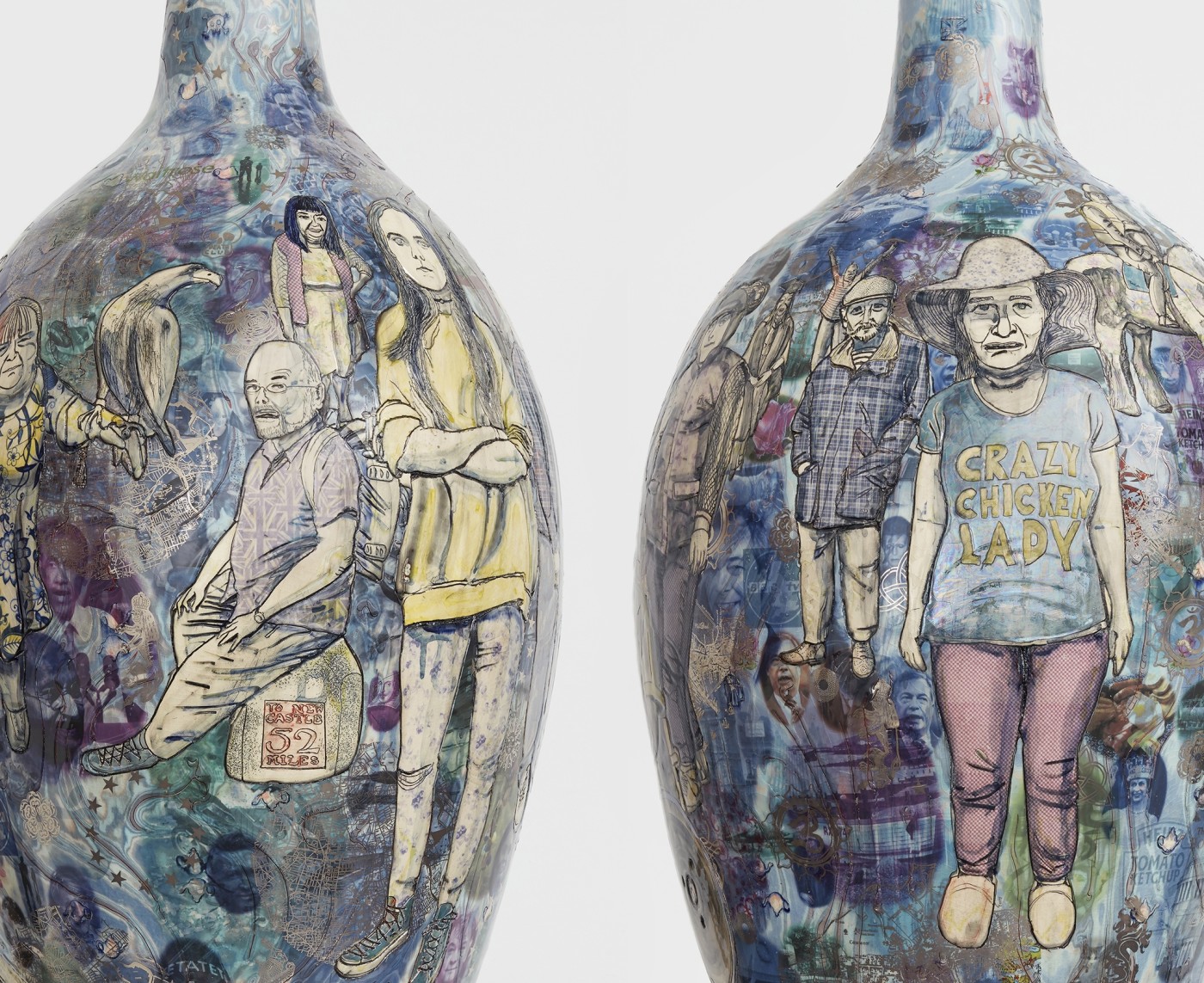
His work contains a prominent autobiographical narrative which often features his alter ego, Claire. The narrative chronicles a troubled childhood in which Perry turned to transvestism to find solace. “I draw as a collagist, juxtaposing images and styles of mark-making from many sources,” he said of his practice. “The world I draw is the interior landscape of my personal obsessions and of cultures I have absorbed and adapted, from Latvian folk art to Japanese screens.”

When he left for Portsmouth in 1979, his stepfather told him not to return home. Perry has been estranged from his mother since 1990. After graduating he lived a hand-to-mouth existence in squats, at one point sharing a house with milliner Stephen Jones and pop musician Boy George, the three of them competing to see who could wear the most outrageous outfits to Blitz, a New Romantic nightclub in Covent Garden, London.
In his work Perry includes pictures of himself in women’s clothes: for example, Mother of All Battles (1996) is a photograph of Claire holding a gun and wearing a dress, in ethnic eastern European style, embroidered with images of war, exhibited at his 2002 Guerrilla Tactics show. One critic has called Perry “The social critic from hell”.

Perry has designed many of Claire’s outfits himself. Also, fashion students at Central Saint Martins art college in London take part in an annual competition to design new dresses for Claire.
In my personal opinion for the final time on this blog, but definitely not the last, I once again don’t understand his work, but I love it. I love how eccentric everything about him and his work is. It is bright, colourful, and very much in your face. I love how he is unafraid to dress how he wants to, which is very inspirational.